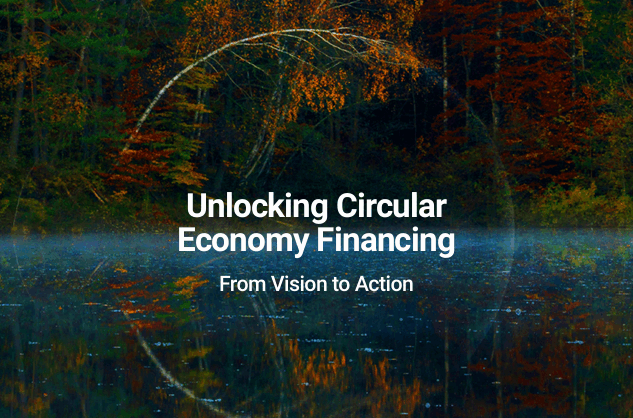“Resilience Is About Preparation”: Bentley Experts on the Future of Transportation – DirectIndustry e-Magazine

Report on Resilient Transportation Infrastructure and its Alignment with Sustainable Development Goals
A recent discussion with Bentley Systems executives Bibhuti Aryal and Burak Boyaci at the Year in Infrastructure (YII) event provided key insights into the development of resilient transportation. The dialogue emphasized the critical role of digital tools, human-centric decision-making, and collaborative frameworks in building infrastructure that is sustainable, adaptive, and aligned with the United Nations Sustainable Development Goals (SDGs), particularly SDG 9 (Industry, Innovation, and Infrastructure), SDG 11 (Sustainable Cities and Communities), and SDG 13 (Climate Action).
Defining Resilient Infrastructure in the Context of SDG 9
The concept of resilience is fundamental to achieving SDG 9, which calls for building resilient infrastructure. The experts defined resilience through two primary functions:
- Preparation: Proactively designing and planning infrastructure to withstand potential disruptions, including those exacerbated by climate change.
- Recovery: The ability of transportation systems to bounce back quickly and efficiently from challenging events, ensuring minimal disruption to communities and economies.
A Human-Centric Approach to Building Sustainable Communities (SDG 11)
Achieving SDG 11, which aims to make cities and human settlements inclusive, safe, resilient, and sustainable, requires a focus on the people who use and build infrastructure. Key takeaways include:
- Infrastructure is fundamentally built to connect and serve people.
- Human decision-making is the primary driver of project outcomes; technology serves as an enabler.
- Empowering stakeholders to make better, earlier decisions reduces conflict and leads to more equitable and effective infrastructure, directly supporting the creation of sustainable communities.
The Role of Digital Innovation in Advancing SDG 9 and SDG 13
Digital tools and AI are pivotal in fostering the innovation required by SDG 9 and building infrastructure capable of withstanding climate-related challenges as per SDG 13. The evolution of engineering software supports these goals in several ways:
- Risk Reduction: Advanced software, such as 3D modeling, identifies design and construction clashes pre-emptively, reducing risk and avoiding costly errors. This contributes to the long-term durability and resilience of assets.
- Informed Decision-Making: Digital tools empower a wider range of users, including non-engineers, to understand complex designs, fostering greater transparency and better-informed decisions throughout the asset lifecycle.
- Accelerated Learning and Adaptation: AI and digital platforms allow for the leveraging of insights from previous projects, enabling engineers to design new infrastructure more quickly and intelligently, which is crucial for adapting to the urgent demands of climate change (SDG 13).
Overcoming Implementation Challenges through Partnership and Trust (SDG 17)
The successful deployment of resilient infrastructure hinges on overcoming technical and procedural barriers, a process that aligns with SDG 17 (Partnerships for the Goals). Key challenges and solutions identified were:
- Building Trust in AI: Engineer skepticism towards new tools is addressed by developing trustworthy AI. Bentley’s Co-pilot, for example, is trained on validated, domain-specific engineering data to provide accurate, reliable information and avoid the “hallucinations” of generic AI.
- Improving Project Frameworks: Technology alone cannot solve delays caused by adversarial contracting and funding structures. A shift towards transparent, collaborative partnerships is necessary to accelerate project delivery.
- Ensuring Data Quality: The principle of “garbage in, garbage out” is mitigated through collaborative environments where data is shared and validated collectively, improving reliability and reducing liability fears.
Global Adoption and Inclusive Digital Transformation
The benefits of digital tools for building resilient infrastructure are globally relevant, supporting sustainable development in all regions.
- Universal Applicability: Digital tools like AI, BIM, and 3D modeling are being adopted worldwide, including in developing regions like Southeast Asia, through cautious but steady pilot projects.
- Cost-Effectiveness: While initial investment may seem high, building infrastructure correctly the first time is the most cost-effective and resilient long-term strategy.
- Partnership Model: By acting as a technology partner rather than a vendor, Bentley helps agencies adapt tools to their specific workflows, building trust and accelerating the digital transformation necessary for achieving global sustainability targets.
Analysis of Sustainable Development Goals (SDGs) in the Article
1. Which SDGs are addressed or connected to the issues highlighted in the article?
-
SDG 9: Industry, Innovation and Infrastructure
- The article’s central theme is the development of “resilient transportation” infrastructure, which directly aligns with the goal of building resilient infrastructure.
- It extensively discusses innovation through the use of “digital tools and AI,” “3D models,” and “digital twins” to improve the planning, design, and construction of infrastructure projects.
- The focus on making infrastructure that “lasts, adapts, and thrives” supports the goal of promoting sustainable industrialization and infrastructure development.
-
SDG 11: Sustainable Cities and Communities
- The article focuses on transportation networks like “roads, rail,” which are essential components for making cities and human settlements inclusive, safe, resilient, and sustainable.
- The concept of resilience, defined as being “more prepared” and able to “bounce back quickly,” is critical for urban areas facing various shocks and stresses, including those related to climate change.
-
SDG 13: Climate Action
- The article explicitly mentions that challenges like “climate risk” have evolved, and resilient infrastructure is a key response.
- Building infrastructure that can withstand and adapt to the impacts of climate change is a core component of strengthening resilience and adaptive capacity to climate-related hazards.
-
SDG 17: Partnerships for the Goals
- The article highlights the importance of collaboration, stating that project delays often stem from “adversarial structures” and that “transparency and partnership” lead to faster progress.
- It describes Bentley Systems’ role as a “technology partner” helping agencies globally, including in “Cambodia, Vietnam, Southeast Asia,” to adopt new digital tools, which exemplifies the sharing of technology and knowledge to achieve sustainable development.
2. What specific targets under those SDGs can be identified based on the article’s content?
-
Target 9.1: Develop quality, reliable, sustainable and resilient infrastructure
- The entire article is dedicated to this target, with a specific focus on “resilient transportation.” The discussion revolves around creating infrastructure that “lasts, adapts, and thrives” by using advanced digital tools to improve design and construction.
-
Target 9.5: Enhance scientific research, upgrade the technological capabilities of industrial sectors
- The article details the adoption of advanced technologies like “AI,” “BIM,” “3D modeling,” and “digital twins” in the engineering and construction sectors. It discusses how these tools “empower users with the right tools at the right time” and represent a significant upgrade in technological capabilities.
-
Target 11.b: Increase the number of cities adopting and implementing integrated policies and plans towards… adaptation to climate change, disaster risk reduction
- The definition of resilience provided—”being more prepared, and being able to bounce back quickly”—is the foundation of disaster risk reduction. The article’s focus on building resilient infrastructure to handle challenges like “climate risk” directly supports this target.
-
Target 13.1: Strengthen resilience and adaptive capacity to climate-related hazards and natural disasters
- This target is directly addressed through the core concept of “resilient transportation.” The article explains that resilience is about preparation for and rapid recovery from challenging situations, which includes climate-related hazards.
-
Target 17.6: Enhance international cooperation on and access to science, technology and innovation
- The article mentions the global adoption of digital tools, noting that countries in “Southeast Asia” are taking “steady steps toward digital delivery.” Bentley’s role as a “technology partner” that helps agencies “configure our tools to match their workflows” is a clear example of technology transfer and cooperation.
3. Are there any indicators mentioned or implied in the article that can be used to measure progress towards the identified targets?
-
Rate of adoption of digital and AI tools in infrastructure projects
- The article implies this indicator by discussing the global adoption of “digital tools, AI, BIM, and 3D modeling.” It notes that adoption is “gradual” and that countries like “Cambodia, Vietnam, Southeast Asia” are moving towards digital delivery, suggesting that tracking this adoption rate is a measure of progress.
-
Reduction in project risks, errors, and delays
- The article suggests that a key benefit of digital tools is risk reduction. Burak Boyaci states, “3D models help identify clashes and problems before construction begins.” He also notes that digital data “saves time and reduces errors.” Measuring the reduction in these negative outcomes serves as a clear indicator of improved efficiency and resilience.
-
Increased use of collaborative project delivery models
- Bibhuti Aryal points out that “adversarial structures” slow down projects and advocates for designing contracts for “transparency and partnership.” An increase in the number of projects using such collaborative frameworks over traditional, conflict-prone ones would be a measurable indicator of progress.
-
Time required for infrastructure to recover from disruptions
- The definition of resilience as being “able to bounce back quickly when something goes wrong” and “recovering quickly from a challenging situation” directly implies that recovery time is a key performance indicator. Measuring the time it takes for transportation networks to become operational after a disruptive event would quantify their resilience.
SDGs, Targets, and Indicators Summary
| SDGs | Targets | Indicators |
|---|---|---|
| SDG 9: Industry, Innovation and Infrastructure | 9.1: Develop quality, reliable, sustainable and resilient infrastructure.
9.5: Upgrade the technological capabilities of industrial sectors. |
– Rate of adoption of digital tools (AI, BIM, 3D modeling) in infrastructure projects. – Reduction in project risks, errors, and delays during design and construction. |
| SDG 11: Sustainable Cities and Communities | 11.b: Increase the number of cities adopting plans towards adaptation to climate change and disaster risk reduction. | – Time required for transportation infrastructure to recover from disruptions. |
| SDG 13: Climate Action | 13.1: Strengthen resilience and adaptive capacity to climate-related hazards. | – Proportion of new infrastructure projects designed with explicit resilience and climate adaptation criteria. (Implied by the focus on addressing “climate risk”). |
| SDG 17: Partnerships for the Goals | 17.6: Enhance international cooperation on and access to science, technology and innovation. | – Number of technology partnerships established to facilitate digital transformation. – Increased use of collaborative project delivery models over adversarial ones. |
Source: emag.directindustry.com
What is Your Reaction?
 Like
0
Like
0
 Dislike
0
Dislike
0
 Love
0
Love
0
 Funny
0
Funny
0
 Angry
0
Angry
0
 Sad
0
Sad
0
 Wow
0
Wow
0














































/environment-climate-change-and-health-(ech)/water-sanitation-hygiene-and-health-(wsh)/landfill-tuvalu-36092.tmb-1200v.jpg?sfvrsn=5c21fe40_1#)



.jpg.webp?itok=0ZsAnae9#)
























